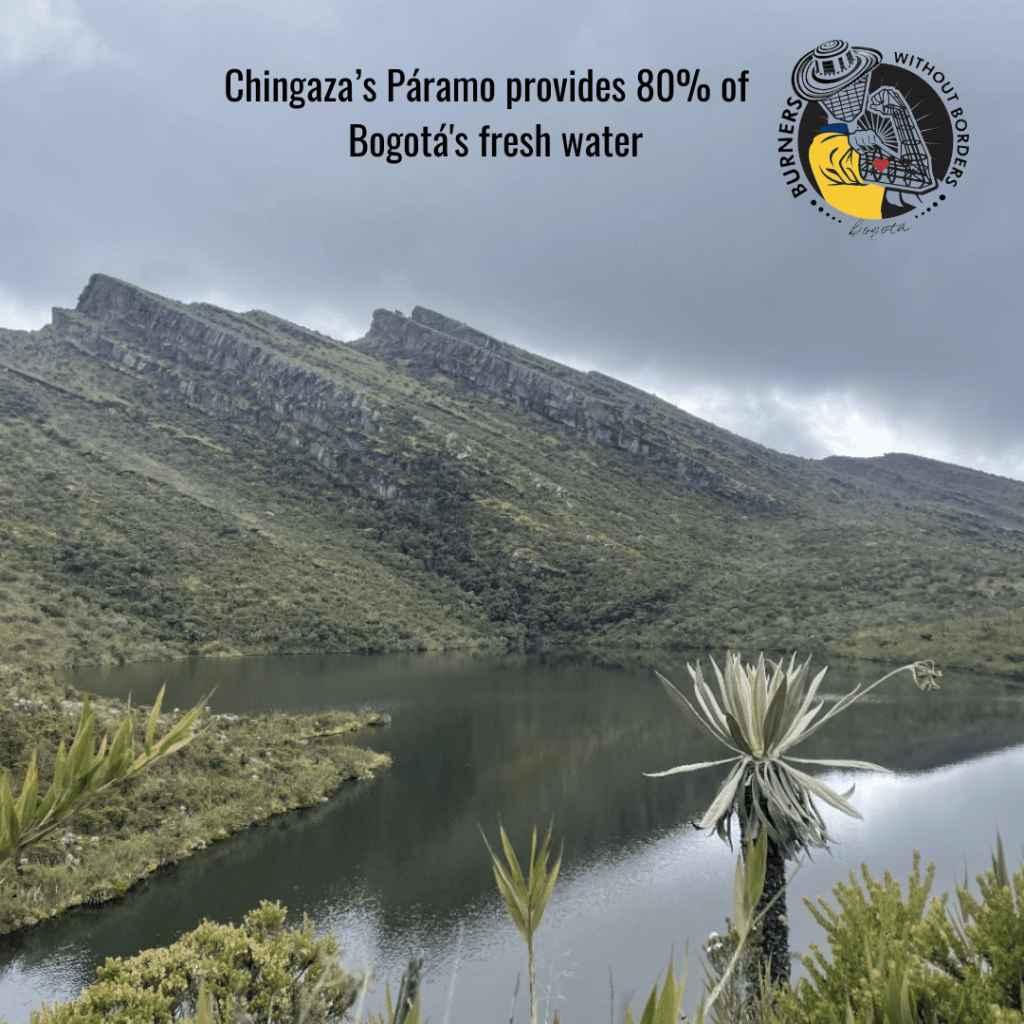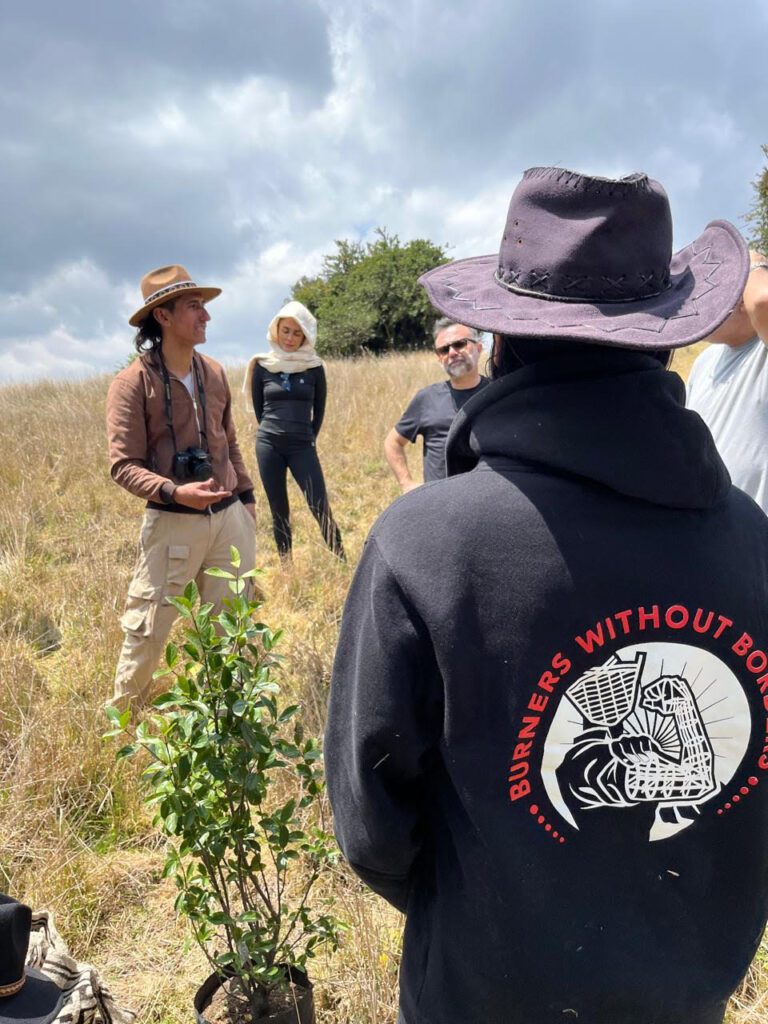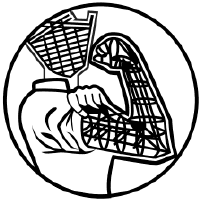BWB Colombia: Uplifting Communities and the Environment, One Project at a Time

December 5, 2024
By Roxane Jessi
I travel to Colombia, fresh from a very different experience at Love Burn in Miami. Colombia is a country so colorful, heart-stoppingly beautiful, and dynamic, but still plagued by varying levels of instability and social injustice. Its coastline extends for miles, and its interior is a mosaic of cities, jungles, and mountains, with a desert of striking red formations in its center. Its people are warm and welcoming (I am fluent in Spanish so thankfully there is no language barrier). This is my second trip to the country. I was here in 2020 just before the pandemic hit and Colombia went into one of the most stringent lockdowns in the world, impacting the economy.
This time I come back to get up close and personal with Burners Without Borders (BWB) Colombia and meet the faces behind the social initiatives being carried out by Burners in this country. Among the remarkable people I’ve met—a 12-year-old girl who reminds me of a Colombian Greta Thunberg and a tireless activist whose project has distributed a staggering 200,000 lbs (90,000 kg) of food in the streets of Medellin.
These initiatives show us the way, a glimpse into one of the many impressive projects emerging from the BWB chapters around the world, demonstrating what can be achieved when we are inspired to action.
The drive from Bogota to the reforestation project named The Germinator in Chingaza Park is long, and the last stretch curves up the mountainside over bumpy, potholed terrain. We are shaken about like ragdolls, but Oswaldo, who co-leads BWB in Bogota, drives us steadily onward. We lose ourselves down narrow and sinuous paths, until the landscape finally opens, lush and emerald green. Way on high, three lakes hollow out the stately mountain, the tallest lying at a breathtaking elevation of 12,000 feet (3,600m). These were chiseled into the landscape millennia ago by glaciers that split, leaving three deep craters filled with ice-cold water.

Each of these lakes has an ancestral story and is a sacred site, as one of the locals would later passionately explain. The first was visited by children, the second by women asking for fertility, the third by caciques, or chiefs and warriors. During their visits, the locals engaged in rituals, often drinking Chicha—an alcoholic drink—that allowed them to read parts of the mountains, and see cosmic patterns in the stars. Legend has it that people would bring offerings of solid gold figurines that blanketed the bottom of the lake. This gave rise to the El Dorado myth. When the Spanish colonists arrived, they drained one of the lakes, only to find the figurines were filled with gold dust rather than being solid gold.
Rituals were also performed to honor special life-giving trees. I now stand amongst these trees that are threatened by mining, livestock farming, and polluting agriculture, side-by-side with the people and project fighting to protect them. BWB Colombia is working closely with Ancestral Foundation (AF) , an organization dedicated to the restoration and conservation of the páramos. A variety of alpine tundra ecosystems are located in the Andes Mountain Range, which according to scientists may be, “evolutionary hot spots,” among the fastest evolving regions on Earth. 50% of páramos are found in Colombia and seventy percent of the Colombian population depends on them for water, including more than 15 million people in and around Bogotá. AF has made it their mission to protect the páramos and local communities at high risk of displacement.
The Nature Reserve stretches over three million hectares, housing unique ecosystems due to its elevation ranging from 2,600 to 13,000 feet (800 to 4,000 meters). I am short of breath as we climb up to the farmhouse to meet the small team. They work to restore the land, planting native fraile trees that take decades to grow to full size. This is a long-term endeavor. The trees are covered in thick gray moss “a sign that the air here is pure,” says one of our guides. Amongst the volunteers is the niece of one of the organizers, a girl of 12 called Danna Valentina with thick-rimmed glasses and a way of carrying herself that shows wisdom beyond her years. I ask if I can interview her and without a second thought, she sits cross-legged in the grass and explains why preserving this landscape matters with a self-assurance that I definitely didn’t have at her age.

It is inspirational to see how the new generation is so committed to the environment, when the previous ones were too busy acquiring things that undermined it. With her long braids and conviction, she reminds me of a Colombian Greta Thunberg. Humans have a way of finding solutions to save our species, and this new generation may hold the key to help change the tide of the wide-scale damage we have inflicted on the planet. Though she lives in Bogotá, she feels more at home in the páramos. Not your average teenager.
Back in the capital, the city pulses with traffic. Reggaeton blares from the radio, with misogynist lyrics that tempt the youth with a very different lifestyle. After Bogotá, I travel to a city that epitomizes fast living in Colombia—Medellin. Here, a surprisingly high percentage of girls seem to have had plastic surgery to change their appearance, including exaggerated implants to achieve a Kardashian-style look. Aside from a gentrified area catering to tourists and the rising numbers of digital nomads, many areas are rundown. The youth here seem to have limited options and some end up living on the streets, joining local gangs. Within this context, I visit a project that offers another way.
Steve moved to Medellin in 2019, and a few months later the COVID-19 pandemic hit. Walking through the streets he saw the magnitude of the problem. As the country went into lockdown, the gap between the have and have-nots increased exponentially. The people who relied on petty trade lost their income, worsening the homeless crisis. In this context, Steve has distributed a staggering total of 20,000 lbs (90,000 kg) of food to those in need over the last two years. If you’ve ever been to Medellin, you will appreciate the magnitude of this task. The streets are run by gangs. And to distribute food, well you need to come to an agreement with those who run the streets. So that’s what he did. Given the difficult situation of the people, and after questioning his intentions as a foreigner, they eventually allowed him to carry out his work.
From his shared Medellin office, where he now runs coding classes for kids, he explains how Burning Man was a catalyst. His first Burn was miserable. He spent three weeks, “in hell,” building and taking down his camp. But when he left the playa, he realized how much it had changed his mindset. “Once you’ve been through endless blinding dust storms trying to get your tent not to blow away you can do anything. It strengthens your resolve.” Spurred on by the successful food distribution drive, he set his sights on longer-term projects in the community. BWB had a big impact on his decision. He presented his idea during a BWB summit and suddenly had access to a huge network, including a lawyer within the BWB network who helped him figure out how to structure the project, and avoid legal issues down the line. This provided the impetus he needed to eventually launch a charity, knowing he had a safety net to turn to for advice.
Steve didn’t apply for a BWB grant, choosing instead to front the cost himself. His energy seems limitless, and he was soon able to raise funds, reinvesting them into new initiatives, including mobile health clinics and micro-loans to traders. Another office room serves as a studio for local artists. Importantly, Steve is not the face of the organization but works through local partners to implement the projects, without which he is certain they would be doomed to failure. Local problems demand local solutions; there needs to be a radical rethink of the entire aid sector towards this realization.
While a small player, movements such as BWB offer alternatives to more rigid structures that don’t allow space for flexibility. Steve is not afraid of trial and error. Just as everything seemed to fall apart when building his camp at BRC, so it is in real life. This work demands resilience, a long-term approach, and constant course correction. Suddenly, the kids interrupt our discussion to spin a giant wheel that Steve has set up in the office. A reminder that having fun is critical to learning.
Back in Bogotá, I sip a local beer with Oswaldo and BWB chapter co-founder Charlotte while we discuss the other projects beyond their reforestation initiative, The Germinator. Oswaldo is also a prolific social activist who rarely seems to rest. When I arrive, he is in full Burner regalia, being photographed and interviewed by a local newspaper. Despite my initial protests, I am pulled in to join the photoshoot. BWB Colombia runs two other projects, one to protect bees called Bee Safe, and another called Ikigai Explorers. Ikigai helps children from low-income families who have dropped out of school to find their purpose in life. Beyond practical skills in areas such as electrical engineering, recycling or photography, it seeks to instill positive values in the children, and to redefine their relationship to authority and the wider community that takes part.

Oswaldo shares how his time at Black Rock City—he has participated in eight Burns—was a game changer. He explains in Spanish, “Experiencing a sort of utopia where everyone collaborates and supports each other changed my life; [it was] so different to society in Colombia.” Back home, he got to work applying the lessons to the local context, securing BWB grants to launch Bee Safe and Ikigai. Unlike Oswaldo, one of the AF collaborators, Andrea, has never been to a Burning Man event. But in many ways her work upholds Burner values, arguably more so than someone who has been to an event but hasn’t internalized the learnings and given back once outside.
Being a Burner doesn’t have to mean going to Burning Man. It is about actively looking for new ways and models to change society. The Regional Network around the world, including urban and “micro-burns,” has expanded the community outwards. It has allowed more people to practice collective living. The scale and essence of these events remind us that Burning Man is not about a giant playground filled with towering art; it is about people. BWB provides another entry point, supporting community-led social work, and spurring people such as Andrea, Danna Valentina, Oswaldo, and Steve into action.
Midway through my journey, I travel to the Tatacoa Desert, which Oswaldo hopes could be a good site for a future Burning Man Regional Event in Colombia. I observe the winding valley of majestic red formations that jut out of the scorched earth like an army of stately, crimson-colored warriors. This desert was once entirely underwater. Sometimes we need to let the water subside to realize the magnitude of what lies beneath, to understand what we are capable of. Something tells me the work I have seen here is just the tip of the iceberg of what can be achieved, both in Colombia and beyond when we are called to action.
In 2024 BWB Colombia was recognized as an official BWB chapter and continues its efforts in the country. If you are interested in getting involved with BWB Colombia be sure to follow them here or email them at colombia@burnerswithoutborders.org

Roxane Jessi is an aid worker and roving Burner who has participated in more than a dozen different Burns around the globe. In 2023 Burning Man Publishing released her new book, “Once Upon a Time in the Dust, Burning Man Around the World,” which chronicles the year she spent participating in seven Regional Burning Man Events on six continents.
